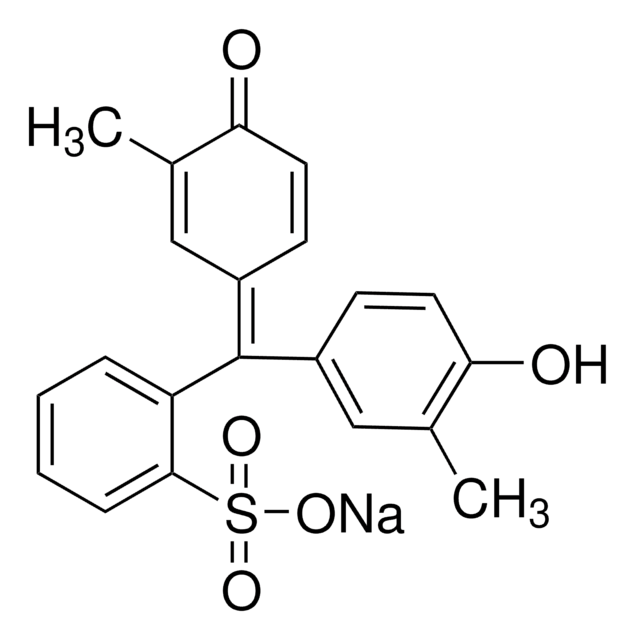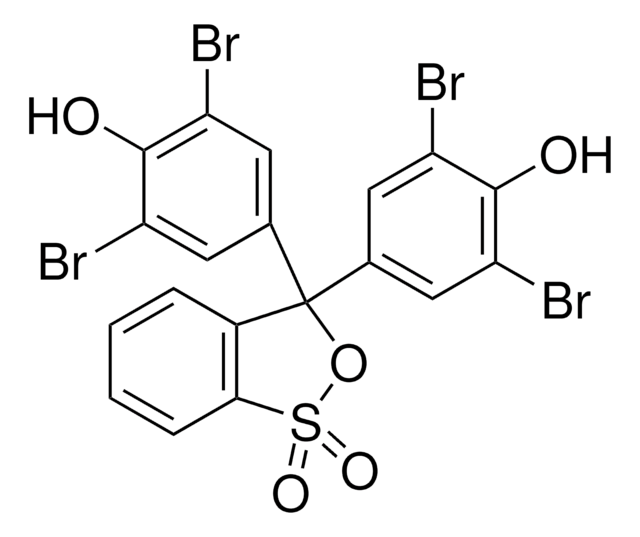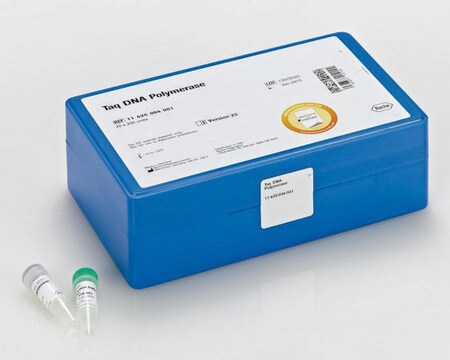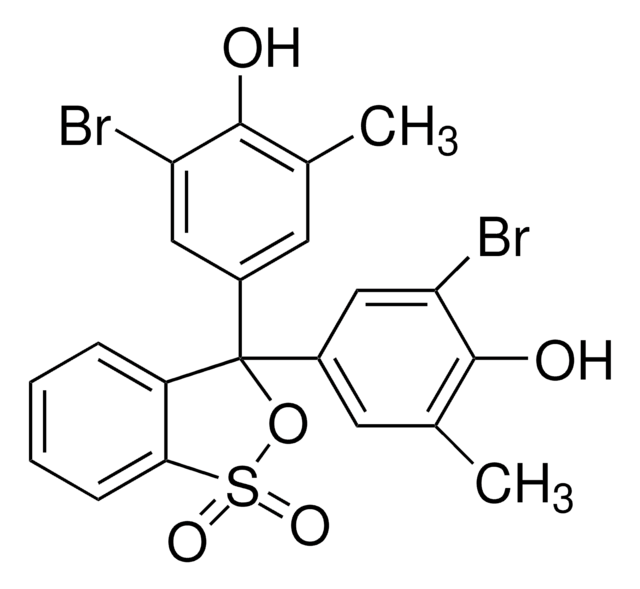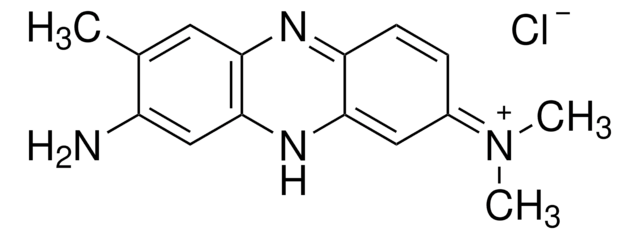114472
Cresol red
indicator grade, Dye content 95 %
Sinónimos:
o-Cresolsulfonphthalein
About This Item
Productos recomendados
grade
indicator grade
Quality Level
form
powder or crystals
composition
Dye content, 95%
technique(s)
titration: suitable
color
red-brown
pH
7.2-8.8, yellow to red
useful pH range
1.8-2.0, orange to yellow(acid)
7.0-8.8, yellow to violet(alkaline)
mp
290 °C
density
0.998 g/cm3
λmax
367 nm (2nd)
570 nm
application(s)
diagnostic assay manufacturing
hematology
histology
storage temp.
room temp
SMILES string
Cc1cc(ccc1O)C2(OS(=O)(=O)c3ccccc23)c4ccc(O)c(C)c4
InChI
1S/C21H18O5S/c1-13-11-15(7-9-18(13)22)21(16-8-10-19(23)14(2)12-16)17-5-3-4-6-20(17)27(24,25)26-21/h3-12,22-23H,1-2H3
InChI key
OBRMNDMBJQTZHV-UHFFFAOYSA-N
¿Está buscando productos similares? Visita Guía de comparación de productos
General description
Application
Storage Class
11 - Combustible Solids
wgk_germany
WGK 3
ppe
dust mask type N95 (US), Eyeshields, Gloves
Elija entre una de las versiones más recientes:
¿Ya tiene este producto?
Encuentre la documentación para los productos que ha comprado recientemente en la Biblioteca de documentos.
Los clientes también vieron
Nuestro equipo de científicos tiene experiencia en todas las áreas de investigación: Ciencias de la vida, Ciencia de los materiales, Síntesis química, Cromatografía, Analítica y muchas otras.
Póngase en contacto con el Servicio técnico